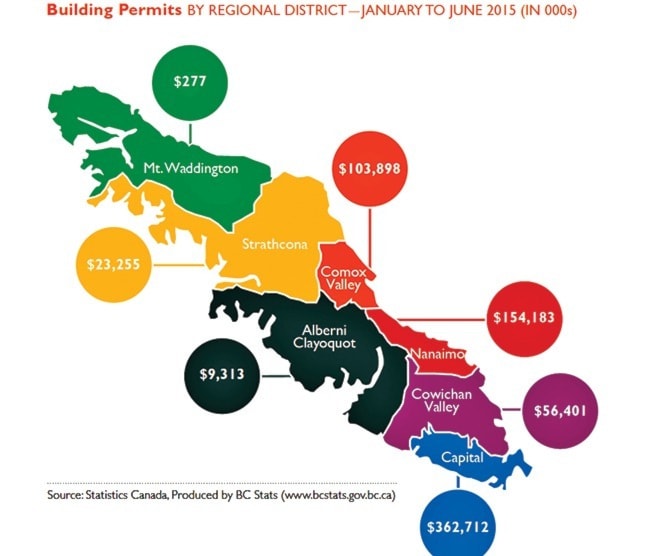The first ever State of the Island Economic Report paints a pretty healthy picture of areas like tourism, but points to some areas that need attention.
"The importance of transportation in terms of cost, time efficiency and reliability is noted as particularly important to the economic vitality and viability of Vancouver Island purely because we are accessible only by water and air and not by road," said Ron Cantelon, Chair of the Vancouver Island Economic Alliance (VIEA) in the forward.
The report also points to the growing importance of First Nations' business and economic development, "as several First Nations approach completion of treaty settlements," he said.
VIEA President and CEO George Hanson said that due to the low Canadian dollar, "In the immediate term we can expect tourism to continue to be strong on the Island, through 2016."
He said this provides "an opportunity for communities, tourism organizations and tourism businesses to take advantage of that immediate opportunity by upping their game and marketing it to Canadian, and U.S. markets in particular."
The concise pamphlet style
52-page report (available at www.viea.ca) provides a detailed economic snap shot of the Island in 2015, with historical context and brings up problem areas, but doesn't offer solutions.
It highlights the key challenges as being the aging population creating a shortage of qualified labour, the high cost of transportation and the small scale of the Island economy limiting growth of individual businesses.
It does break the economics down in a fair bit of detail, with charts and graphs of things like employment per industry (health care and social assistance is highest at 54,000), the impact of the fishery (about 60 per cent of the province's $410 million) and the continued dominance of forestry, though declining.
It also highlights the growing importance of international students, with 8,133 on the Island in 2013, of which 1,824 were in the Regional District of Nanaimo.
Qualicum Beach Coun. Bill Luchtmeijer attended the VIEA Economic Summit in Nanaimo last month and reported back to council that is was an excellent event with a lot of useful information about things like why entrepreneurs move to this area, the benefits to the community of special events and how municipalities everywhere are moving from having economic development officers to "business introduction services."
Visit www.viea.ca for more information.
